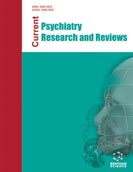Abstract
Background: Cognitive impairment as a consequence of stroke is a major cause affecting the patient’s functional independence, activity participation, daily living skills, and occupation. Almost 75% of post-stroke patients are diagnosed with significant cognitive impairment, which includes problems with attention, orientation, memory, language, and perception. Along with effective pharmaceutical cures, cognitive intervention as a part of rehabilitation approaches that may prevent, delay, or treat cognitive impairment is becoming increasingly important. Many studies have reported improvement in cognitive functions of post-stroke patients after using computer-based cognitive intervention (CBCI). CBCI can be an effective add-on to available rehabilitation programs.
Objective: This article provides reviews related to relevant literature and, represents a structure to specify the efficacy of CBCI for the rehabilitation of post-stroke patients for future research.
Methods: We searched many search engines namely MEDLINE, Web of Science, clinical key and The Cochrane Library, for studies investigating the effect of cognitive intervention based on a computer program for post-stroke patients. The results of selected studies were summarized. Total 19 publications from January 2007 to January 2019 are included in this review. The search terms entered were a combination of these search areas that defined (1) the population as adults who had suffered a stroke and cognitive dysfunction, (2) intervention search term included cognitive abilities, cognitive training, and computer-based training; computer-based cognitive intervention for rehabilitation.
Results: The results after computer-based training showed improvement in various cognitive functions such as; memory, attention and executive functions of post-stroke patients. However, a significant difference between the study groups has not been observed in all the studies. Most studies analyzed in this research project indicated that such interventions might contribute to the improvement of cognitive function, especially attention concentration and memory. Of the 19 kinds of research that discussed CBCI outcomes 18 found significant improvements for one or more cognitive functions. When the effect size for CBCI was reported, effects were large in comparison to other traditional cognitive interventions of post-stroke patients.
Conclusion: Studies related to cognitive functions strongly support CBCI except few have reported a significant difference. The review of all the studies suggests that CBCI may help to change the functional aspect of post-stroke patients by improving their cognitive functions. In this field, it is a challenge to conduct well designed and sufficiently powered studies due to low budgets availability, the limited number of available patients, heterogeneity of the population, and ethical considerations. Future studies should examine all the challenges, limitations, and valuable insights into the study and emphasize the need for a carefully designed computer-based cognitive intervention program for the future. Future studies should target to compare CBCI with active and passive control conditions and include a larger sample size.
Keywords: Cognitive impairment, stroke, cognition, CBCI, cognitive rehabilitation, dysfunction.
[http://dx.doi.org/10.4103/0972-2327.168631] [PMID: 27011621]
[http://dx.doi.org/10.1155/2018/3238165] [PMID: 30598741]
[http://dx.doi.org/10.5853/jos.2013.15.3.128] [PMID: 24396806]
[http://dx.doi.org/10.1136/bmj.39059.456794.68] [PMID: 17218714]
[http://dx.doi.org/10.1310/tsr1605-346] [PMID: 19903653]
[http://dx.doi.org/10.1159/000328970] [PMID: 21720162]
[http://dx.doi.org/10.1002/gps.2482] [PMID: 21086539]
[http://dx.doi.org/10.3109/09638288.2010.508829] [PMID: 20712416]
[http://dx.doi.org/10.1017/S0959259802012194]
[http://dx.doi.org/10.1310/tsr1501-27] [PMID: 18250071]
[PMID: 17119299]
[http://dx.doi.org/10.1111/j.1747-4949.2012.00972.x] [PMID: 23280268]
[http://dx.doi.org/10.1136/jnnp.57.2.202] [PMID: 8126506]
[http://dx.doi.org/10.1155/2016/3456943] [PMID: 27340686]
[http://dx.doi.org/10.1053/apmr.2000.19240] [PMID: 11128897]
[http://dx.doi.org/10.1136/bmjopen-2018-024429] [PMID: 30819706]
[http://dx.doi.org/10.1177/154596839601000302]
[http://dx.doi.org/10.1161/01.STR.24.12.1794] [PMID: 8248957]
[http://dx.doi.org/10.1016/j.apmr.2003.10.022] [PMID: 15241754]
[http://dx.doi.org/10.1186/s12984-016-0204-z] [PMID: 27806718]
[http://dx.doi.org/10.4045/tidsskr.12.0686] [PMID: 23463064]
[http://dx.doi.org/10.1503/cmaj.081148.R2]
[http://dx.doi.org/10.1136/bmjopen-2016-014819]] [PMID: 28348196]
[http://dx.doi.org/10.1002/msj.20099] [PMID: 19306374]
[http://dx.doi.org/10.1002/14651858.CD006220.pub2]] [PMID: 21249675]
[http://dx.doi.org/10.1080/10749357.2018.1556963] [PMID: 30570451]
[http://dx.doi.org/10.2196/jopm.8929]
[http://dx.doi.org/10.1016/j.jstrokecerebrovasdis.2017.11.008] [PMID: 29221967]
[http://dx.doi.org/10.1186/s12877-018-0893-1] [PMID: 30219036]
[http://dx.doi.org/10.1371/journal.pone.0040588] [PMID: 22792378]
[http://dx.doi.org/10.7326/0003-4819-151-4-200908180-00135] [PMID: 19622511]
[http://dx.doi.org/10.3109/02699052.2013.830195] [PMID: 24087909]
[http://dx.doi.org/10.3109/02699052.2013.830196] [PMID: 24131298]
[http://dx.doi.org/10.3109/02699052.2010.498007] [PMID: 20715888]
[http://dx.doi.org/10.1080/02699050601148726] [PMID: 17364516]
[http://dx.doi.org/10.1016/j.jns.2012.12.024] [PMID: 23312291]
[http://dx.doi.org/10.1177/0300060513505809] [PMID: 24722262]
[http://dx.doi.org/10.1589/jpts.27.2487] [PMID: 26355244]
[http://dx.doi.org/10.1589/jpts.27.1029] [PMID: 25995548]
[http://dx.doi.org/10.1589/jpts.27.773] [PMID: 25931728]
[http://dx.doi.org/10.4172/2155-9562.1000260]
[http://dx.doi.org/10.1186/s13063-018-2577-8] [PMID: 29566766]
[http://dx.doi.org/10.3109/07380577.2013.844877] [PMID: 24102589]
[http://dx.doi.org/10.1097/00004356-199609000-00004] [PMID: 8910125]
[http://dx.doi.org/10.1024/1016-264X.14.4.283]
[http://dx.doi.org/10.3390/bs8010004] [PMID: 29301194]
[PMID: 25764255]
[http://dx.doi.org/10.3109/09638288.2014.980915] [PMID: 25374045]
[http://dx.doi.org/10.1016/j.jocn.2019.04.026] [PMID: 31085075]
[http://dx.doi.org/10.1016/j.apmr.2010.11.015] [PMID: 21440699]
[http://dx.doi.org/10.1080/09602011.2010.492711] [PMID: 20818577]
[http://dx.doi.org/10.3233/NRE-131017] [PMID: 24284460]
[http://dx.doi.org/10.1016/j.jsams.2017.05.001] [PMID: 28600111]
[http://dx.doi.org/10.1186/s12883-015-0397-y] [PMID: 26286548]











